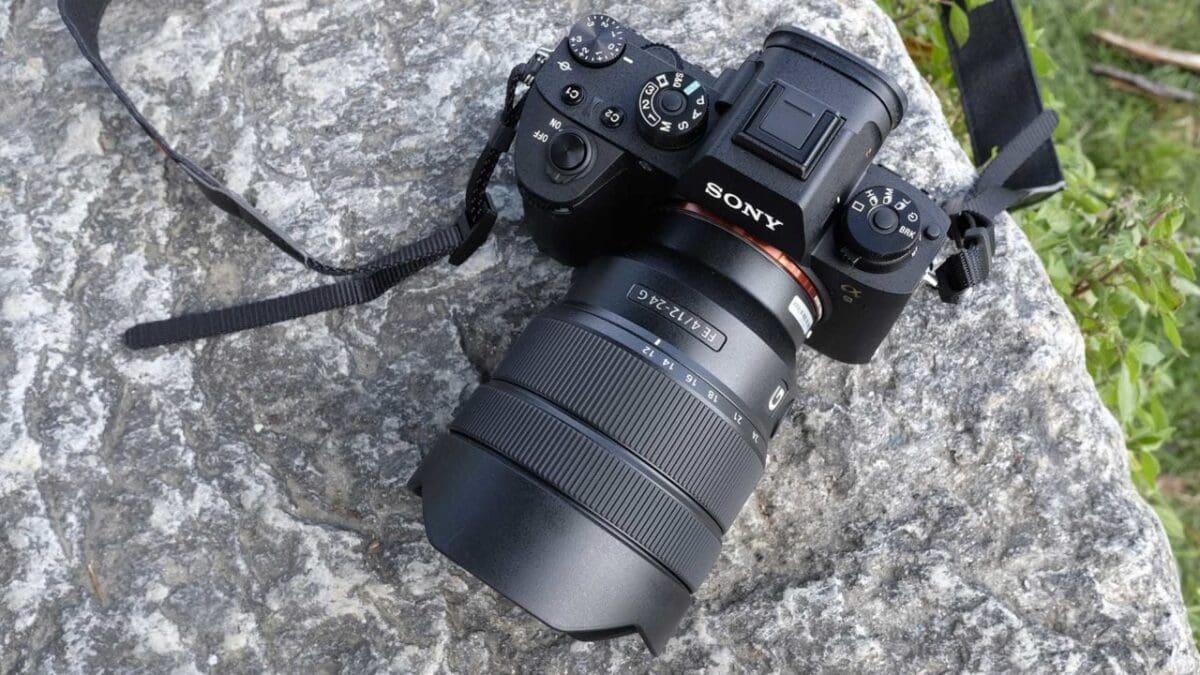The launch of the full-frame Sony A9 camera was swiftly followed by two new full-frame lenses.
Currently the widest full-frame lens Sony has ever produced, the 12-24mm f/4 G lens offers an ultra wide-angle viewpoint for full-frame sensors.
It has been designed with lightness in mind, with a front element size and length which results in a surprisingly small overall size. It weighs in at just 565g, which when combined with a full-frame camera like the Sony A9 or the Sony A7R II, you get a nicely balanced combination which sits well in the hand.
There are a few subjects which are well suited to a lens like this, including landscape, architecture and interiors. It’s also got a dust and moisture resistant construction, which should make it even more appealing to photographers shooting outdoors.
The lens has two rings around it. The larger of the two is used for zooming the lens in and out, and is marked with the relevant focal lengths. The ring is also textured with a rubberised grip, which makes it feel secure when you’re twisting it. Towards the front of the lens is a smaller ring, which is also textured, which you use for manually focusing the lens.
For those that prefer to stick to autofocus, the lens features an advanced inner-focus mechanism, with Sony’s snappily named Sony’s Direct Drive SSM (or DDSSM for short). I found during my time with it that the lens locked onto the subject easily and quickly. In good light, focus was acquired almost instantly, while in slightly darker conditions, hunting was kept to a minimum and I saw no instances of a false confirmation of focus.
As well as the two lens rings, there is a customisable focus hold button, as well as an AF/MF switch. Like most Sony lenses, there’s no aperture ring, which may be missed by some users.
There’s an integrated lens hood, which helps to keep ghosting at flare at bay – something which can often be an issue with ultra wide angle lenses. During my time with it, I still found that flare occurred from time to time when pointing the lens directly at the sun. It wasn’t too obvious or problematic though, and could be overcome by shooting at wider apertures. Another point to note when shooting at narrow apertures is the starburst shape you can see when pointing the lens at bright light sources (such as the sun). This is quite an attractive look which can be particularly exaggerated by shooting at very narrow apertures, such as f/22.
Although the 12-24mm f/4 G lens isn’t part of Sony’s G “Master” range, it still promises to deliver sharp results. I found this to be the case during my time with it, but I’d really like to spend some more time with it to be absolutely sure.
At the moment, you won’t find a wider angle than 12mm for a Sony lens – and it is very wide indeed. In fact, it’s hard to imagine too many scenarios where you’ll need a lens which offers this kind of scope to capture the scene. That said, if you have special cause to buy something like this, the early results look very promising indeed.
The Sony 12-24mm f/4 G may not be a G Master like the other new wide-angle lens which was announced at the same time, the 16-35mm f/2.8 G Master, one big advantage is a cheaper retail price. However, you may find a 16-35mm f/2.8 lens is a more versatile option, and therefore offers better value for money despite being more expensive.
We’ll bring you a full review of the Sony 12-24mm f/4 G lens as soon as samples become more widely available.



